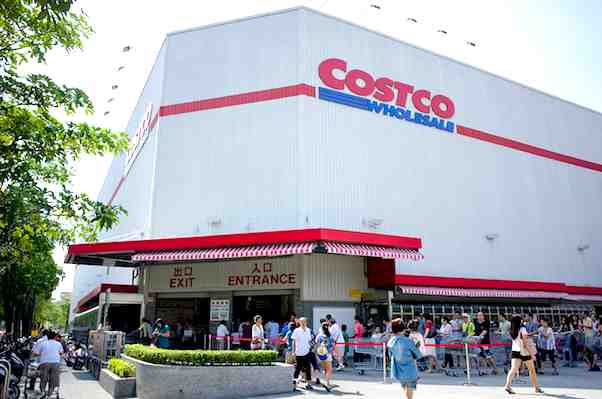
Costco Wholesale Corporation’s case shows continuing business growth and expansion. With operations in overseas locations, such as Taiwan, the firm is among the biggest retail organizations in the world. As a warehouse club chain, Costco depends on consumer purchasing capacity and consumer perception, which are significant when considering competition in the retail market, which is saturated. Competition involving other retailers, like Walmart, Aldi, Home Depot, Amazon, and Whole Foods, is notable. Costco maintains competitive advantages to ensure long-term business viability. These competitive advantages are linked to the affordability and quality of goods and services, which the company employs to continue growing its business.
Costco Wholesale uses its business model to follow its mission statement. However, the company needs to continue enhancing its strategies for sustained business growth and development, considering the challenges related to the internal analysis elements (strengths and weaknesses) and external analysis elements (opportunities and threats) in this case. Also, while keeping its current business model, Costco can explore new opportunities through the diversification of its supply chain, product mix, and other aspects of the business.
Costco’s Mission, Business Model & Strategy
Mission. Costco’s mission is “to continually provide our members with quality goods and services at the lowest possible prices.” This mission statement is directly linked to the company’s business model and strategy. Costco’s mission emphasizes quality and affordability, which are factors customers usually look for in the retail market. Thus, this mission statement guides strategic actions that contribute to the retailer’s competitive advantages. A more detailed analysis of Costco’s mission statement shows strategic focus on customers and their needs as determinants of business development.
Business model. Costco uses a membership warehouse club business model. In this model, shoppers pay a membership fee to access low-cost products available at the company’s stores. Non-members may accompany members. However, non-members can use Costco Shop Cards to shop at the company’s stores. Competitors, like Sam’s Club and BJ’s Wholesale Club, use similar business models.
Strategy. Costco’s generic competitive strategy is cost leadership. This strategy entails maintaining low business costs that allow for low selling prices. Other retailers, like Walmart and Aldi, also use a cost-leadership strategy. Costco’s strategy combines the membership warehouse club business model to achieve differentiation from other retail firms.
The company’s business model is a core factor that enables the satisfaction of the company’s mission and its goals. This business model aligns with the company’s mission. The generic strategy of cost leadership also agrees with and is needed to sustain Costco’s business model through relevant competitive advantages.
SWOT Analysis
Main article: SWOT Analysis of Costco Wholesale
Costco’s Strengths (Internal Factors)
Costco’s success capitalizes on the main strengths of the business, as follows:
- The company has very attractive low prices on practically every category of goods offered at its stores and on its website.
- Costco has rapid inventory turnover combined with high sales volume, contributing to higher revenues. The high sales volume ensures high revenues in spite of low selling prices.
- The high sales volume contributes to high operating efficiency. Higher operating efficiency is achieved by minimizing variable costs. Variable costs are lower when volumes are higher.
Costco’s Weaknesses (Internal Factors)
Despite its position as one of the largest retailers, Costco has the following weaknesses:
- The membership warehouse club business model presents a weakness. This model encourages members to buy at the company’s stores, but also limits the total number of customers. Non-member buyers may feel unwelcome at Costco stores.
- The company has the weakness of some limitations in its array of goods and services. Customers might go to other retailers, like Walmart and Amazon, which have a higher variety of goods and services in some departments.
Opportunities for Costco (External Factors)
To ensure its long-term business viability, Costco must consider and exploit these opportunities in its industry and beyond:
- The company has the opportunity to enter new markets, such as markets in developing countries.
- Costco has the opportunity to expand the coverage of its e-commerce websites. The company currently offers online services to a limited group of markets.
- The company also has the opportunity to increase the variety of its goods and services to improve the attractiveness of its stores to a more diverse population of customers.
Threats to Costco’s Business (External Factors)
Threats in the retail market impose limits and barriers against Costco’s growth and expansion. These threats are as follows:
- The entry of new membership warehouse club retail companies threatens Costco’s potential to succeed in overseas markets. In overseas markets, new membership warehouse clubs are opening.
- The aggressive marketing of other retail firms threatens Costco.
Key Points
Costco Wholesale Corporation is a viable business. The company has the essential strengths to take advantage of opportunities in the retail industry. The firm’s low prices make it attractive even during times of economic difficulties. Costco has opportunities to address threats to its long-term viability. The warehouse club chain can use its website and its network of suppliers to support new strategies for competing with new retailers. This retail business is expected to continue to grow in the long term. Expansion in overseas markets can also further boost the company’s success. Moreover, improved strategies and tactics for Costco’s marketing mix (4Ps) can reduce the negative impact of the threat of competition.
References
- Costco Wholesale Corporation – Company Profile.
- Costco Wholesale Corporation – Form 10-K.
- Costco Wholesale Corporation – Shop Card FAQs.
- He, X. (2024). What is the role of the membership model and warehouse model in attracting and retaining Costco customers? Finance & Economics, 1(5).
- Park, J., Hong, E., & Park, Y. N. (2023). Toward a new business model of retail industry: The role of brand experience and brand authenticity. Journal of Retailing and Consumer Services, 74, 103426.
- U.S. Department of Commerce – International Trade Administration – Retail Trade Industry.